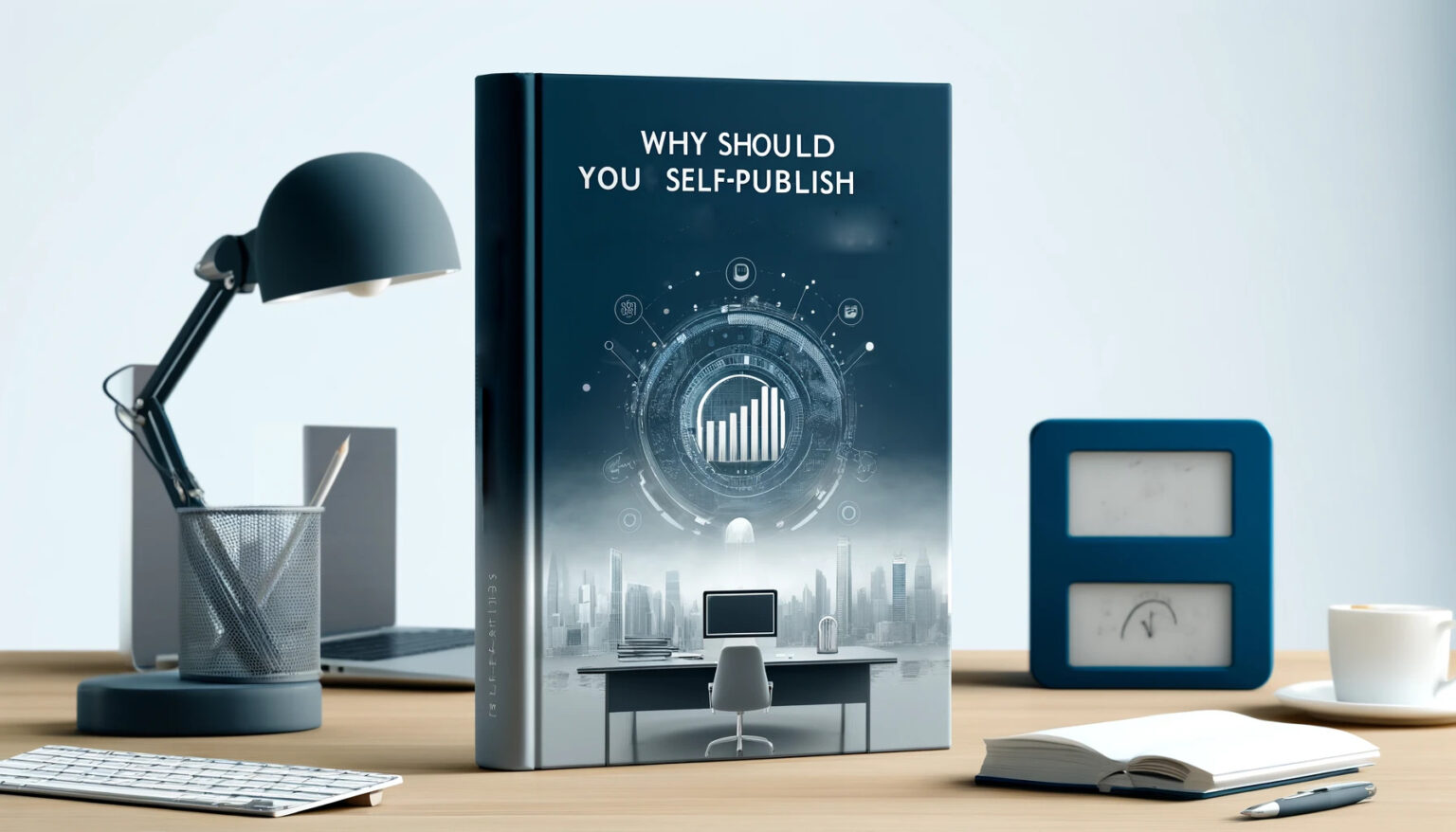When it comes to publishing a business book, authors are typically confronted with two main pathways: traditional publishing or self-publishing. Each approach offers distinct advantages and challenges, and the choice largely depends on the author’s goals, resources, and timeline. Traditional publishing involves partnering with established publishing houses that manage the editorial process, design, distribution, and some marketing aspects. This route can lend a degree of prestige and comprehensive support but often at the cost of creative control and a smaller share of the royalties.
On the other hand, self-publishing puts the author firmly in the driver’s seat, providing complete control over every aspect of the book, from content to cover design, marketing, and sales strategy. This path not only allows for a faster route to market but also significantly increases potential earnings per copy sold. Self-publishing is particularly appealing in the business genre, where the timeliness of the book’s content and the author’s direct engagement with their audience can be crucial for the book’s relevance and success. Self-publishing companies, such as Spines, or IngramSpark, play a pivotal role by offering authors professional print and ebook creation services, along with a global distribution network to share their works with the world.
For business professionals, self-publishing isn’t just about writing and selling a book; it’s an entrepreneurial venture that complements their business or personal brand. This approach empowers authors to tailor their content to the specific needs of their audience, aligning the book’s message closely with their business strategies, and career goals. The following sections will explore the reasons why you should self-publish your business book and detail the publishing process, and provide insights on navigating the associated challenges effectively.
Your Publishing Journey Awaits – Start NowAdvantages of Self-Publishing for Business Authors
Complete Control Over Content and Publishing Timeline
One of the most significant advantages of self-publishing for business authors is the unparalleled control it offers over both the content and the timeline of publishing. Unlike traditional publishing, where editorial decisions and publication schedules are often dictated by the publisher’s priorities and timelines, self-publishing allows authors to release their book exactly when it’s most relevant to their business and market needs. This flexibility is crucial for content that aligns with specific industry trends or professional milestones. Furthermore, authors can update their content as needed to maintain its relevance, which is particularly advantageous in the fast-paced business environment where industry knowledge evolves rapidly.
Higher Royalties and Revenue Potential
Financially, self-publishing can be far more rewarding than traditional publishing routes. Traditional publishers typically offer authors royalties that are a small percentage of the book’s selling price, after deducting costs related to distribution, marketing, and retail margins. In contrast, self-published authors can earn upwards of 70% of the sales price as royalties when selling digital books and a significantly higher portion of the revenue from print-on-demand than they would through a traditional publisher. This increased revenue potential makes self-publishing a lucrative option for business professionals who plan to leverage their books as part of a broader professional toolkit or business strategy.
Direct Connection with Your Audience
Self-publishing empowers authors to directly engage with their readers without intermediaries, fostering a more personal connection that can be invaluable for business authors. This direct engagement allows authors to gather feedback, understand reader needs, and adjust their offerings accordingly. Additionally, it enables authors to build and nurture their professional network, enhancing their visibility and influence within their industry. Such connections are not only beneficial for book sales but also for professional growth and business opportunities, turning the book into a powerful networking tool.
Enhanced Credibility and Personal Branding
Publishing a business book independently can significantly enhance an author’s credibility and solidify their reputation as a thought leader in their field. This path allows authors to articulate their insights, experiences, and unique perspectives without compromise, establishing their authority and expertise. A well-crafted, professionally published book can serve as a cornerstone of a personal brand, opening doors to speaking engagements, consultancy opportunities, and enhanced professional stature. The very act of self-publishing business books itself denotes expertise and can differentiate an author from competitors, providing a competitive edge in their business endeavors.
Customization of Marketing and Sales Strategies
Self-publishing offers authors complete freedom to customize their marketing and sales strategies to best suit their target audience. Business authors can choose where and how to market their book, selecting the channels that are most effective for reaching their specific audience, such as industry conferences, professional networking sites, or direct email campaigns. This tailored approach allows for more efficient use of marketing budgets and higher effectiveness in promotional activities. Authors can also adjust pricing, run promotions, and explore various distribution channels to maximize their book’s reach and impact, aligning their sales strategies with broader business goals. This level of customization is rarely possible with traditional publishing, where authors have little say in marketing and sales tactics.
The Self-Publishing Process Explained
Preparation and Planning
The journey of self-publishing a business book starts long before the first word is written; it begins with meticulous preparation and planning. A solid book plan acts as a blueprint, guiding the author through each stage of the publishing process. This plan should start with defining the target audience—understanding who they are, what challenges they face, and how the book will address these challenges is crucial. This knowledge not only helps in crafting content that resonates with readers but also in marketing the book effectively later on.
Next, the author needs to clarify the book’s key message or thesis. This is the central idea around which all content will revolve. It should be compelling, clear, and directly linked to the needs and interests of the target audience. Setting specific goals for the book, such as establishing thought leadership, generating leads, or providing unique insights into the industry, will help keep the content focused and purpose-driven.
Additionally, creating a detailed outline that structures the book into chapters or sections ensures that the content flows logically and covers all necessary points thoroughly. This stage might also involve researching and gathering relevant data or case studies to support the book’s arguments, making the final product not only informative but also engaging and credible.
Your Publishing Journey Awaits – Start NowWriting and Content Development
Writing and content development are at the heart of the self-publishing process. For business authors, maintaining a professional tone while being engaging is essential. The writing should be accessible, avoiding jargon that could alienate readers who are not specialists in the field, yet detailed enough to provide the story with real value. Starting each chapter with an outline of key points can help in maintaining structure and focus throughout the writing process.
When developing content, business authors should consider including real-life examples, anecdotes, and case studies. These elements not only make the content more relatable but also reinforce the practical application of the information provided. Additionally, character development is not just a tool for fiction writers; in business books, profiling industry leaders or clients as characters in case studies can effectively illustrate points and add a human element to the narrative.
It’s also crucial for authors to regularly review, write, and revise their drafts to ensure clarity and coherence. Seeking feedback from trusted colleagues or beta readers in the target audience can provide valuable insights and help refine the book’s content.
Design and Production
The final stage of the self-publishing process involves design and production, which are critical to making the book visually appealing and reader-friendly. The book design includes the layout of the inside pages, the book description, and the creation of a compelling cover that attracts attention while reflecting the book’s tone and subject matter.
Choosing between eBook and print book formats—or deciding to offer both—is an important decision that depends on the author’s target audience preferences and distribution goals. eBooks offer convenience and accessibility, especially for a global audience, while print books may be preferable for a local audience or for use in professional settings like conferences and workshops.
For the cover design, whether for an eBook or a print version, it’s advisable to hire a professional book designer, who understands the genre and market. The cover is often the first thing a potential reader will see, and it plays a crucial role in the purchasing decision. The internal layout must also be professionally done to ensure that the book is easy to read and looks credible; this includes choosing the right fonts, spacing, and headers.
Finally, authors should consider the logistics of print production if they choose to offer physical copies. Print-on-demand services can be a cost-effective solution without requiring large upfront investments in inventory, perfectly aligning with the flexible nature of self-publishing.
In summary, each phase of the self-publishing process, from initial planning and writing to final design and production, requires careful attention to detail and a clear understanding of the goals and audience of the book. By meticulously managing each aspect, authors can significantly enhance their chances of producing a successful business book.
Self-Publishing With Spines
Spines is an innovative self-publishing platform that simplifies the process of bringing your memoir or novel from manuscript to readers worldwide. With its intuitive, AI-assisted tools, Spines ensures that every aspect of publishing is accessible, even to those new to the literary world. Spines is the best option for 21st-century writers, offering everything on one platform.
Here’s a straightforward step-by-step guide on how to publish with Spines, ensuring your book is not only well-crafted but also widely accessible.
1. Manuscript Upload
Start your publishing journey by uploading your manuscript to Spines’ user-friendly dashboard. This initial step is more than just a file transfer—it’s the beginning of your book’s public life. You’ll enter details such as the book’s title, author name, subtitle, and category, which are crucial for your book’s identity. Upon uploading, Spines immediately provides a copyright protection certificate, ensuring your work is secure and safeguarded against infringement.
2. Intuitive Cover Design
The cover of your book is its first impression on potential readers. Spines facilitates this critical aspect with an AI-powered cover generator, which allows you to create a compelling cover effortlessly. Whether you’re starting from scratch or have a pre-existing design, Spines’ tools are designed for ease of use, ensuring anyone can design a professional-looking cover without needing technical design skills.
3. Proofreading
Next, Spines’ AI scans your manuscript for grammatical errors and suggests enhancements, acting as a first layer of editing to polish your text. For authors seeking a more human touch, Spines also offers professional proofreading services to ensure your manuscript is thoroughly vetted and ready for publication.
4. Formatting
In the formatting stage, you can customize the interior of your book. Spines offers a variety of formatting styles and options to enhance the visual appeal of your text. Choose the typesetting for your initial paragraphs, select your contributors if any, and decide on the book’s physical attributes, such as cover finish (matte or glossy) and binding (paperback or hardcover).
5. Audiobook Creation
If you opt for an audiobook version, Spines’ state-of-the-art AI comes into play again, creating an audiobook in your chosen voice. This option expands your book’s accessibility and reach, catering to audiences who prefer listening to their literature.
6. Order Your Copies
Once you are satisfied with the digital setup, you can order copies of your book. Specify the quantity and format (eBook, print, or both), and provide your shipping address. Spines handles all the production details, allowing you to relax and look forward to the delivery of your published work.
7. Global Distribution
Finally, your book is set for global distribution. Spines generates optimized metadata for your book, ensuring it reaches a wide array of distribution channels, including major retailers like Amazon and Barnes & Noble. This global reach is vital for attracting a diverse readership and achieving literary success.
By guiding you through each step with advanced tools and professional support, Spines turns the complex process of publishing into a manageable, rewarding journey, allowing you to focus more on your writing and less on the logistics of becoming a published author.
Your Publishing Journey Awaits – Start NowChallenges and How to Overcome Them
Steep Learning Curve
Embarking on self-publishing, especially for first-time authors, can be daunting due to its steep learning curve. The complexities of managing the entire publishing process—from writing and editing to design, marketing, and sales—require a broad set of skills that many may initially lack. However, the wealth of resources available today can significantly ease this journey. Numerous online platforms, courses, and communities exist solely to assist self-publishers.
Websites like Reedsy or the Alliance of Independent Authors offer tools and guidance on everything from writing to publishing. Additionally, hiring freelance professionals for specific tasks, such as editing or cover design, can also mitigate this challenge by bringing experienced talent to your project. Learning from successful self-published authors through their blogs, books, or podcasts can provide insights and real-world advice, making the process more manageable and less intimidating.
Financial Investment and Risk
Self-publishing a business book requires upfront financial investment, particularly if aiming for a professional end product. Costs can include hiring editors, cover designers, and possibly marketers. There’s also the cost of purchasing ISBNs, printing, and distributing the book. This financial outlay represents a risk, as there is no guarantee of recouping the investment through book sales. To mitigate these risks, authors can start by budgeting carefully; determining which aspects of the publishing process are essential to pay for and which can be managed personally.
Utilizing print-on-demand services can also reduce financial risk by eliminating the need for large print runs, allowing books to be printed as they are sold. Crowdfunding platforms like Kickstarter may be another avenue to cover initial costs by pre-selling the book before publication.
Marketing and Distribution Challenges
Marketing and distributing a self-published book can be particularly challenging without the support of a traditional publisher. The key to overcoming these challenges is to develop a clear, focused marketing strategy tailored to your target audience. This strategy should include a mix of online and offline marketing tactics. Building a strong online presence through social media, a dedicated book website and engagement in relevant online communities can help reach a wider audience. Email marketing campaigns targeting industry contacts and potential readers who have shown interest in your work can also be effective.
For distribution, leveraging platforms like Amazon’s Kindle Direct Publishing for eBooks and CreateSpace for print books can provide global reach with relatively little hassle. For broader distribution, authors might consider working with a distributor that specializes in independent books. Networking with bookstore owners and arranging speaking engagements at industry events can also help increase visibility and sales.
Additionally, offering initial copies for review to bloggers, industry influencers, and through reader review sites can help generate buzz and credibility. Participating in book fairs, panels, and other events can also increase visibility among potential readers. By systematically approaching marketing and distribution, focusing on building relationships, and leveraging technology, self-published authors can significantly enhance their book’s chances of success.
Comparing Self-Publishing with Traditional Publishing
Control and Rights
One of the most stark differences between self-publishing and traditional publishing lies in the control over creative and publishing rights. In traditional publishing, authors often have to concede some level of creative control to the publisher, who decides on final edits, book cover design, and even the title. Additionally, the publisher holds the right to decide where and how the book is distributed. In contrast, self-publishing allows authors to retain full creative control and rights to their work, enabling them to make all decisions regarding content, design, distribution, and pricing. This freedom can be particularly valuable for authors who have a specific vision for their book or want to retain the flexibility to revise and republish their work.
Time to Market
The time it takes to bring a book to market can vary dramatically between the two publishing paths. Traditional publishing typically involves a lengthy process, including finding an agent, securing a publisher, and then going through the publishing cycle, which can take anywhere from 18 to 24 months after the manuscript is accepted. Self-publishing, however, can be much quicker, with authors able to publish a book within a few months of completing the manuscript. This rapid time to market is especially advantageous for business books, where timely content can be crucial.
Profitability and Royalties
Financially, the routes of traditional and self-publishing diverge significantly. Traditional publishers generally offer authors an advance against royalties, which are usually a small percentage of the book’s sales—often between 10% to 15% for print and up to 25% for eBooks. In contrast, self-publishing platforms like Amazon’s Kindle Direct Publishing offer up to 70% of sales as royalties for eBooks. While self-publishing may require an upfront investment that a traditional publisher would normally cover, the higher royalty rate and potential total earnings can make self-publishing more profitable for authors who effectively market their own books.
Support and Resources
Traditional publishing provides authors with a team of professionals—editors, designers, marketing and sales staff—that can significantly improve the quality and market reach of a book. This support can be invaluable, especially for first-time authors unfamiliar with the process. However, self-published authors must either perform these tasks themselves or outsource them, which can be both challenging and costly. Nonetheless, the rise of various services and platforms designed to assist self-publishers means that professional-quality support is still accessible, allowing self-published books to compete with traditionally published ones in quality and professionalism.
Reputation and Recognition
Traditionally, being published by a recognized publishing house has carried a stamp of approval that can lend an author and their book a certain level of prestige and credibility. This perception has been a significant barrier for self-published authors, who may struggle with the stigma of self-publishing as an inferior route. However, this perception has been changing rapidly as many self-published books achieve critical and commercial success. While traditional publishing still offers broader mainstream recognition and easier access to certain markets like major bookstores and libraries, the gap in reputation between the two models is steadily narrowing as more self-published authors gain significant recognition and professional respect.
Your Publishing Journey Awaits – Start NowCase Studies of Successful Self-Published Business Authors
Mark Dawson
Mark Dawson, a former lawyer turned author, has become a powerhouse in the self-publishing world, particularly known for his series on self-publishing success. Dawson’s strategy revolves around harnessing the power of online marketing and building a dedicated fan base through social media and his website. He offers courses on self-publishing and actively engages with his audience through newsletters and webinars, using his books as a tool to enhance his wider business model. His success is not just in book sales but in creating a sustainable business that supports his writing and teaching career.
Joanna Penn
Joanna Penn is another stellar example of successful self-publishing. Starting out in the non-fiction space with books on career change, she later transitioned to writing thrillers and mysteries. Penn’s strategy includes a strong emphasis on diversifying income streams; she earns through book sales, audiobooks, speaking engagements, and affiliate marketing. Her blog, “The Creative Penn,” is packed with resources for writers and serves as a crucial marketing tool. Joanna’s approach demonstrates how a book can serve as a cornerstone for a multifaceted business, enhancing her profile and authority in the publishing industry.
Pat Flynn
Well-known in the entrepreneurial field, Pat Flynn’s transition into self-publishing was propelled by his desire to share knowledge on passive income. Flynn’s book, “Will It Fly?”, tests business ideas before full-scale execution and was a product of his experience and his website’s community feedback. He used his established platform, including his popular podcast and website, to market his book directly to an already engaged audience, demonstrating effective use of existing channels to boost book sales and reinforce personal branding.
Analysis of Success Factors
The success of these self-published business authors can be attributed to several common traits and practices:
1. Leveraging Existing Platforms: Each author had already built a significant platform, whether it was a blog, podcast, or online course system. These platforms provided a ready audience for their books and a foundation for marketing efforts.
2. Strategic Use of Digital Marketing: All three authors made extensive use of digital marketing tools, including social media, email marketing, and content marketing. They understood their target audiences well and tailored their marketing strategies to meet the specific needs and preferences of those audiences.
3. Diversification of Income: Recognizing that book sales alone might not be sufficient, they diversified their income streams. This diversification came through courses, speaking engagements, affiliate marketing, and more, which not only increased their earnings but also helped stabilize their income over time.
4. High-Quality Content and Presentation: Despite self-publishing, they invested in professional editing, design, and production to ensure their books met high-quality standards. This professionalism helped dispel any stigma associated with self-publishing and made their books competitive with traditionally published titles.
5. Engagement and Community Building: These authors put a strong emphasis on building and maintaining a community around their work. By engaging with readers and fostering a sense of community, they ensured continued interest and support for their current and future projects.
These factors combined to not just make their individual books successful but also to enhance their overall professional stature and influence in their respective fields.
Conclusion and Final Thoughts
The journey through the landscape of self-publishing reveals numerous benefits that are particularly compelling for business authors. This publishing route offers unparalleled control over every aspect of the book, from its content and design to its marketing and distribution. This control not only allows authors to tailor their books to the precise needs of their audience but also ensures that the timing of the release can maximize impact in relation to market trends or professional milestones.
Moreover, self-publishing significantly increases the potential for higher earnings through direct sales and greater royalty percentages. It also offers business professionals a unique opportunity to enhance their personal brand and establish themselves as authorities in their field. The ability to connect directly with their audience fosters deeper engagement and can transform a book into a powerful tool for networking and professional growth.
Given these advantages, self-publishing should be considered a viable and attractive option for business authors aiming to extend their influence and achieve specific business and professional goals. It is an entrepreneurial approach to publishing that requires investment, be it time, money, or effort, but the potential returns and the fulfillment of reaching one’s audience directly and on one’s own terms can far outweigh these costs.
For those on the brink of this decision, remember that the world of self-publishing is rich with resources, community support, and success stories that not only inspire but also illuminate the path to achieving remarkable success as an independent author in the business realm.
Your Publishing Journey Awaits – Start Now







